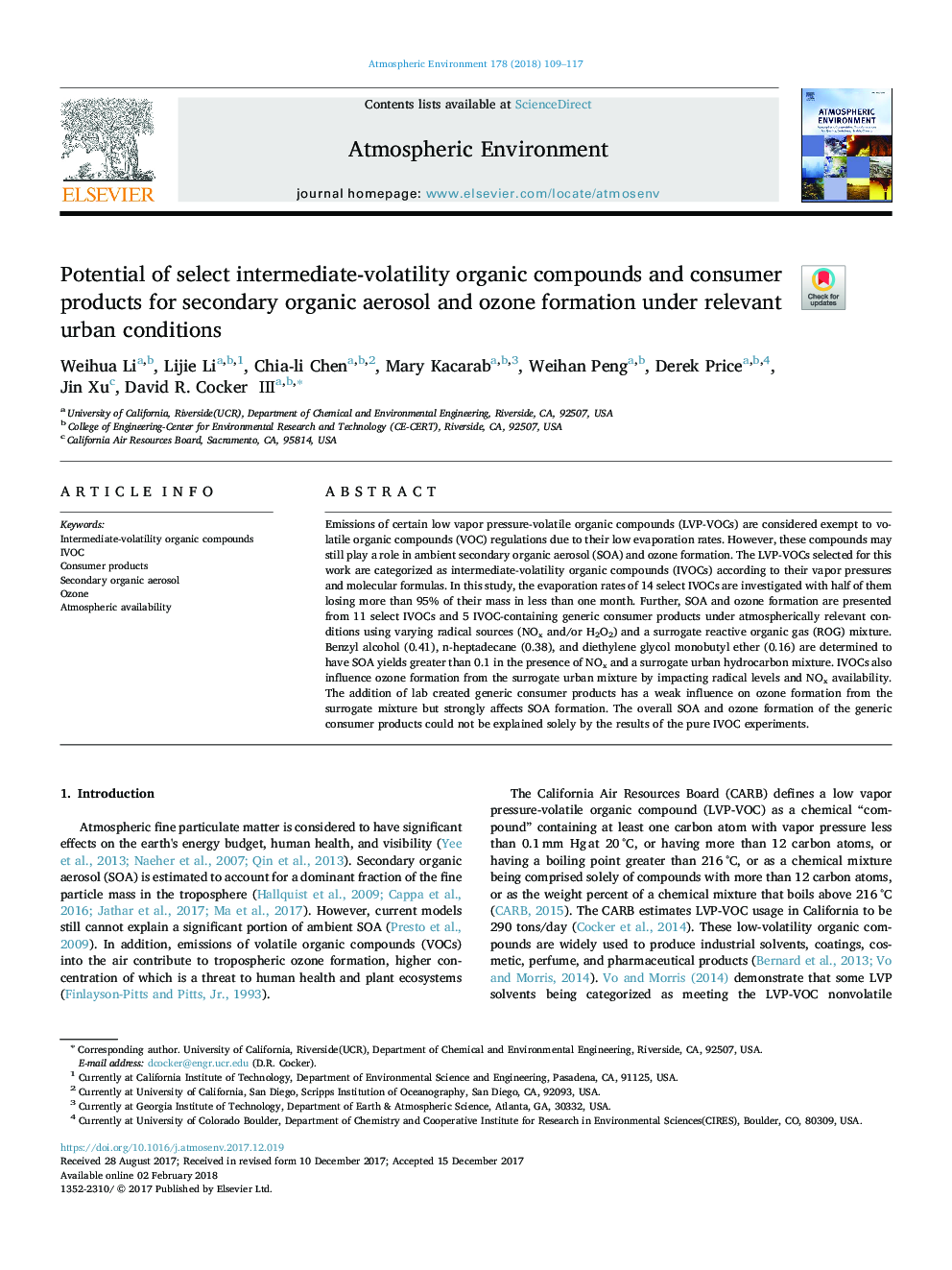| Article ID | Journal | Published Year | Pages | File Type |
|---|---|---|---|---|
| 8864014 | Atmospheric Environment | 2018 | 9 Pages |
Abstract
Emissions of certain low vapor pressure-volatile organic compounds (LVP-VOCs) are considered exempt to volatile organic compounds (VOC) regulations due to their low evaporation rates. However, these compounds may still play a role in ambient secondary organic aerosol (SOA) and ozone formation. The LVP-VOCs selected for this work are categorized as intermediate-volatility organic compounds (IVOCs) according to their vapor pressures and molecular formulas. In this study, the evaporation rates of 14 select IVOCs are investigated with half of them losing more than 95% of their mass in less than one month. Further, SOA and ozone formation are presented from 11 select IVOCs and 5 IVOC-containing generic consumer products under atmospherically relevant conditions using varying radical sources (NOx and/or H2O2) and a surrogate reactive organic gas (ROG) mixture. Benzyl alcohol (0.41), n-heptadecane (0.38), and diethylene glycol monobutyl ether (0.16) are determined to have SOA yields greater than 0.1 in the presence of NOx and a surrogate urban hydrocarbon mixture. IVOCs also influence ozone formation from the surrogate urban mixture by impacting radical levels and NOx availability. The addition of lab created generic consumer products has a weak influence on ozone formation from the surrogate mixture but strongly affects SOA formation. The overall SOA and ozone formation of the generic consumer products could not be explained solely by the results of the pure IVOC experiments.
Related Topics
Physical Sciences and Engineering
Earth and Planetary Sciences
Atmospheric Science
Authors
Weihua Li, Lijie Li, Chia-li Chen, Mary Kacarab, Weihan Peng, Derek Price, Jin Xu, David R. III,
